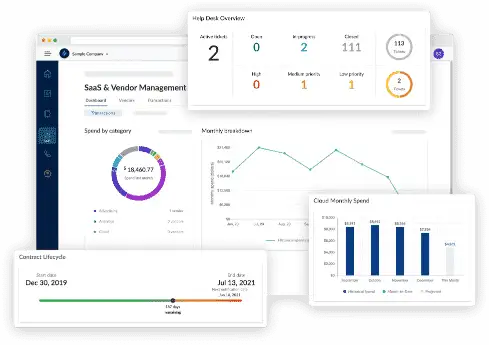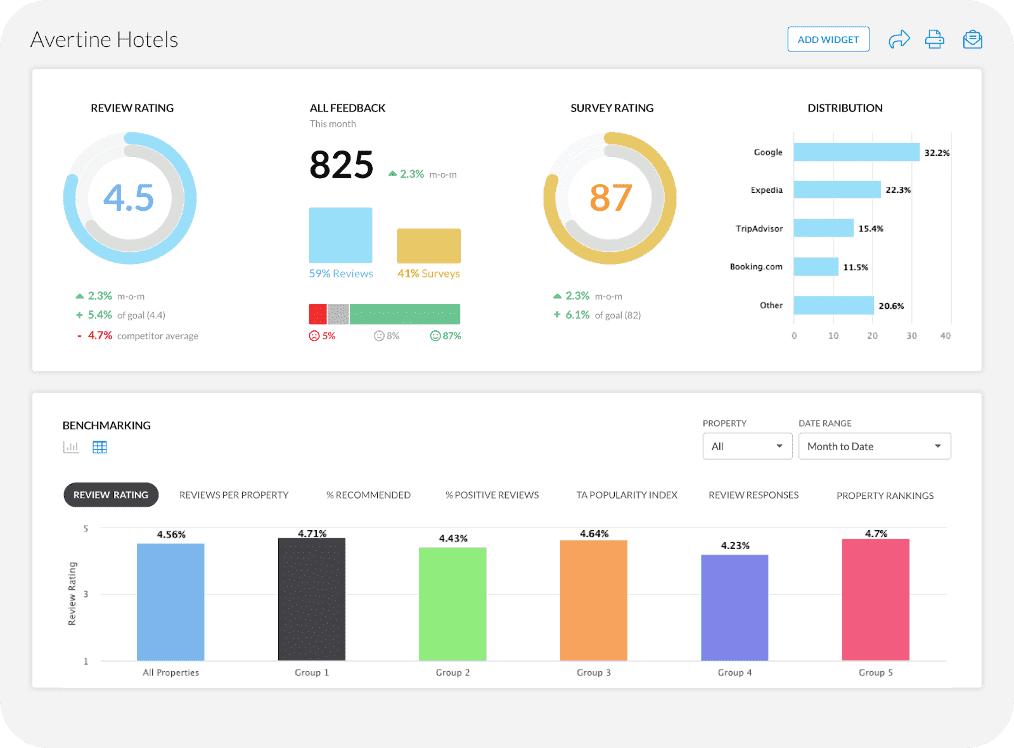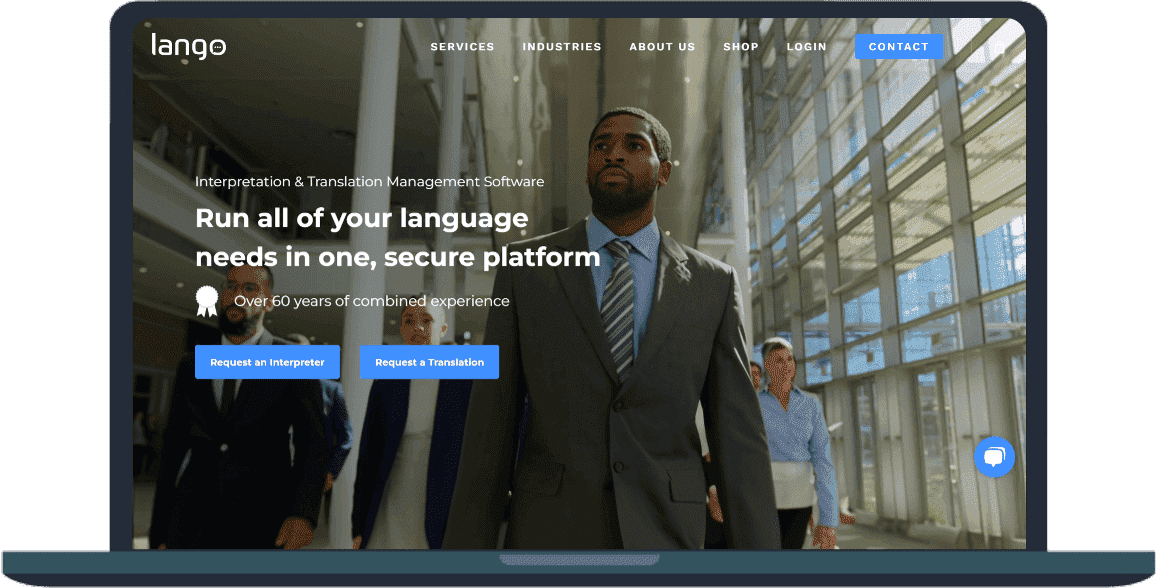What is your understanding of accessibility and accessible applications? How in the modern world can one ensure accessibility for new applications? CodingCops will answer all your queries and address your concerns about building accessible React applications.
Accessibility is one of the core principles of the contemporary web design. It makes sure that the applications are accessible and easy to use for persons with and without disabilities. For building such applications, businesses opt for React, which is capable of building interactive user interfaces and is understandable for all.
In this long but interesting article, our readers will have an understanding of accessible applications, their importance, best practices, and much more.
What is Accessibility in Web Applications?
“The process of developing application that can be used by people with disabilities” is accessibility. They can be visual, auditory, motor, or cognitive disability.
Building such applications fulfills many needs while making sure that every individual can perceive, navigate, and interact with the program without any inconvenience.
Moreover, it is important to build accessible applications to make your project comply with the Web Content Accessibility Guidelines (WCAG). Adhering to WCAG guidelines will make your web application a credible source of information and you ultimately will have a better user engagement rate.
Why Is Accessibility Important for React Applications?
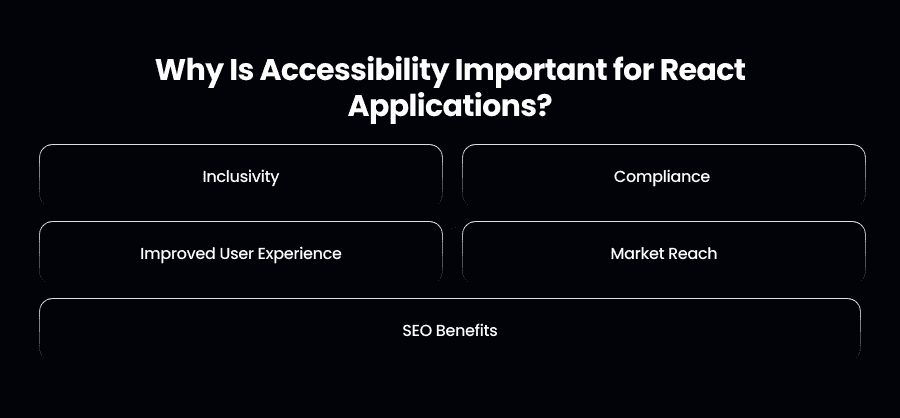
Accessibility for React applications holds a sheer significance for React applications due to the following reasons:
Inclusivity
Developers with the skills to build applications that are accessible to everyone ensure that no user is left behind. This allows your application to reach better to the target audience you get better conversion rates.
Compliance
In America, certain laws like the Americans with Disabilities Act (ADA) demand your digital product comply with specific accessibility requirements. If you have an application that doesn’t meet the standards, you might have to face legal challenges.
Improved User Experience
Accessibility is also important for the user experience. If your application has better navigation, clearer instructions, and optimized layouts, you are more likely to furnish a better user experience to your audience.
Market Reach
An accessible app looks catchy and easy to navigate to a diverse audience, including people with disabilities. This helps your application reach to great number of potential clients.
SEO Benefits
If you have an accessible digital application, search engines will find it easier to rank your application in SERP which is good for your business. Moreover, it fastens your page load times.
React and Accessibility
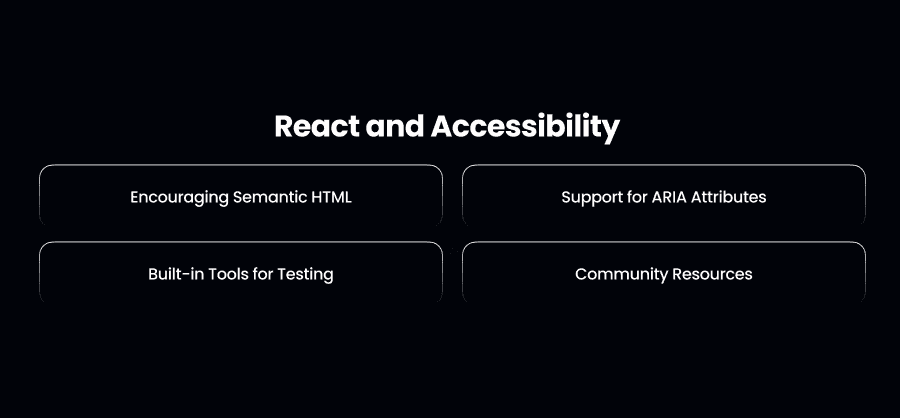
React has features and methods for accessibility from design to implementation. They are also more flexible and have an ecosystem that enables the developers to incorporate accessibility features into the applications.
1. Encouraging Semantic HTML
React supports the usage of semantic HTML elements which have meaning and context of the content. This makes it possible for other tools such as screen readers to be able to understand the layout and content of a webpage.
2. Support for ARIA Attributes
React supports ARIA attributes that are used in enhancing the access of web applications by providing extra information about the parts of the page.
3. Built-in Tools for Testing
The React ecosystem is comprised of tools that help developers detect and fix accessibility problems while coding. Accessibility testing should be done as early as possible and as frequently as possible to minimize the chances of errors.
4. Community Resources
React has a great community that shares the best practices, libraries, and tools for creating accessible applications. This collective knowledge can be so helpful for developers who are working on projects with a focus on inclusiveness.
Best Practices for Accessibility in React
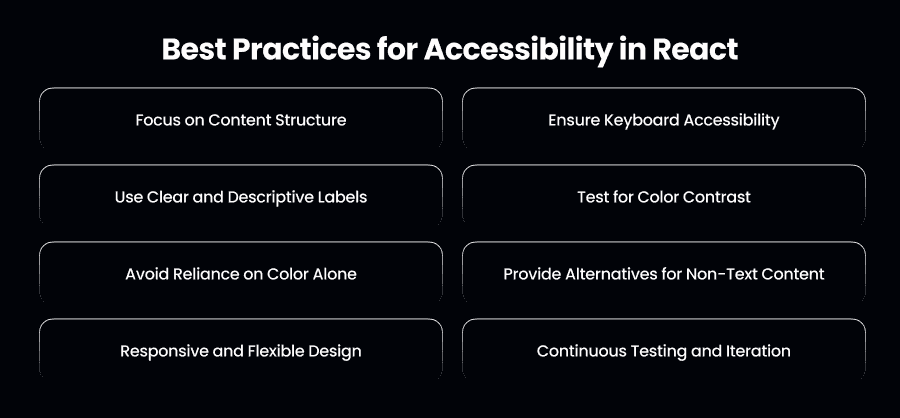
- Focus on Content Structure
Format content with headings and subheadings, lists, and sections, to help assistive technologies to navigate the content. It is always easier for everyone if an application is well structured.
- Ensure Keyboard Accessibility
All controls in the content should be keyboard accessible. This makes it possible for users with a disability to use a mouse or touch interface to be able to use the application.
- Use Clear and Descriptive Labels
Use meaningful names and text for all controls including buttons and forms. These labels are useful to the users to know the role of each of them, especially when dealing with the screen readers.
- Test for Color Contrast
The text and background color should be different so that users with low vision can easily read the content of the website. WCAG has provided certain guidelines regarding the contrast ratio so that the content becomes easily visible and accessible to all.
- Avoid Reliance on Color Alone
When passing information, do not only rely on color. Add text, patterns, or icons to make sure that such people as color blind or have other vision problems will be able to comprehend the information.
- Provide Alternatives for Non-Text Content
These are text descriptions of images, icons, and multimedia objects. This makes it easy for the users who are unable to see or hear the content to be able to get the information it is passing across.
- Responsive and Flexible Design
Make sure that your application is friendly to users across devices and supports multiple screen sizes. A responsive design makes the site more available to people who use mobile devices and accessibility tools.
- Continuous Testing and Iteration
Accessibility is not an activity that is once done. It is recommended to perform the accessibility testing of your application regularly using tools and manual checks. Updates keep the application legal and easy to use to the last version.
Common Accessibility Pitfalls to Avoid
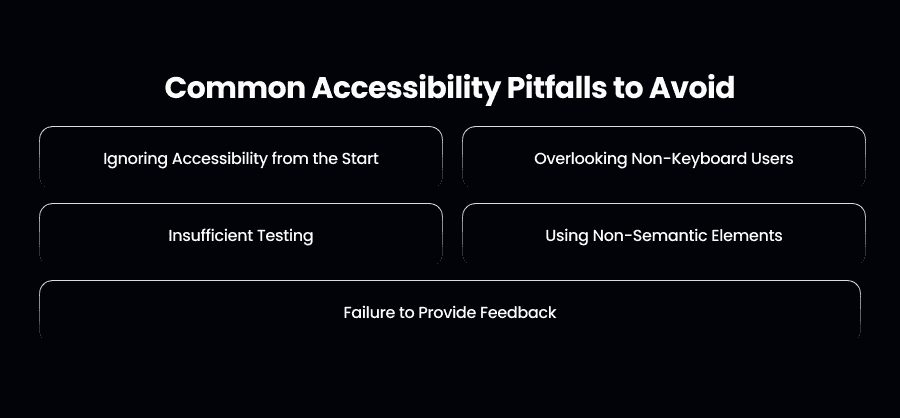
Ignoring Accessibility from the Start
Accessibility should be built into a product from the ground up rather than as an extra layer.
Overlooking Non-Keyboard Users
Failing to consider keyboard navigation results in a portion of your users being locked out of your application.
Insufficient Testing
Automated tools are useful but they do not catch all problems. Automated testing should always be done alongside manual testing.
Using Non-Semantic Elements
Using too many P tags, divs, and spans and not giving them proper roles and labels complicates the work of assistive technologies to understand the page.
Failure to Provide Feedback
Make sure users get feedback when they are filling out the forms or any other dynamic objects in the site or application in the event of an error.
Benefits of Accessible React Applications
- It makes your application available for use by everyone, and this promotes the feeling of equal opportunity.
- An easy-to-use application shows your company’s willingness to be socially responsible, which is beneficial for the overall brand image and reputation.
- Adherence to accessibility standards minimizes the chances of legal suits and fines.
- Search engine optimization measures such as semantic HTML and faster page loading time are beneficial for accessibility.
- Inclusive applications are friendly to the user, making them spend more time on the application and become loyal customers.
Conclusion
Creating accessible React applications is not just about the legal requirements; it’s about bringing inclusivity and equity for all digital users. When using React and adhering to its tools and guidelines, programmers can design applications that reach out to various users successfully. Accessibility makes technology not only usable but liberating for all consumers.






